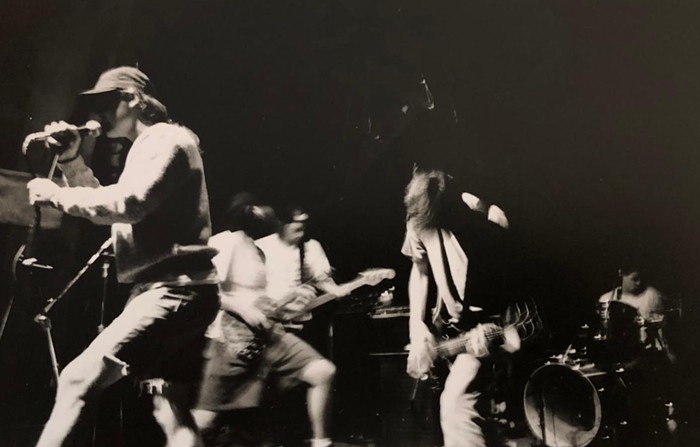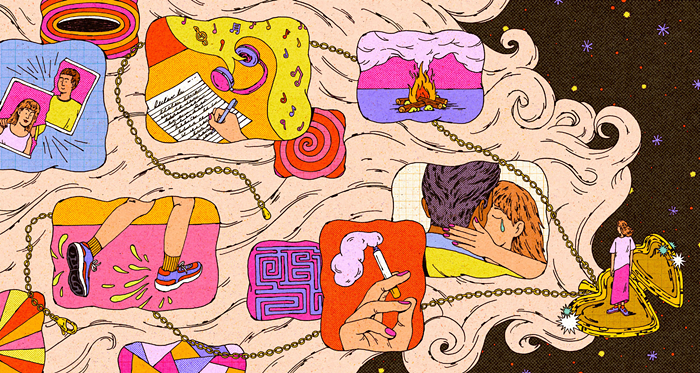Specs One has been rapping and making beats for as long as the underground has been around. During this long length of time, he has never made a single compromise in his music. From the early period of tapes to the middle period of CDs to the current period of MP3s, little if anything about his music—his dusty digital approach to production, his raw and immediate style of rapping (nothing but mic, lips, and spit), his convoluted meanings—has changed. Specs One has simply never tried to make any other kind of hiphop than that which he wants to make. In his entire oeuvre, you will not find an attempt to go pop or a single beat that is aimed at the market. Specs One's mode is indifferent to trends. His hiphop is a strange plant that lives and thrives in the light, rain, and air of this lonesome part of the Pacific Northwest.
On his new album, gRAPhics, he is back "in the lab." And what he makes in the lab is a very basic but beautiful brand of sonic fiction. "Who is it?" Specs One asks on several tracks on this and other albums. Of course, it's the original space neighbor. Specs One has been to space and back many, many times. He knows the stars like the mic in his hand. Like his other work, gRAPhics is decidedly low-tech, with severe robotic loops and programmed piano samples. It is music for the land of the aftermath—a world of broken ghetto blasters and secret transmissions from unknown planets. His raps, however, have little to do with science fiction or aliens and much to do with the details of a rapper who is true to the game, the ethics of a dedicated b-boy, the old and trusted hiphop values of paying dues and doing your own thing.
A quick survey of gRAPhics: The longest track on the album, "Paper Cutz" (it's just over four minutes), has a beat that functions as a base for three spectacular and operatic launches to the stars. On "Vibing," Specs One relaxes and explains with little or no effort the ideal mental condition for his music—vibing. On "Full Pipe," we hear something like a lonely celebration or party—on the top, a solo horn that's stretched over the entire track; in the middle, a few funky licks; and rising from the bottom, a little bump to the beat. "Magian" opens with a burst from the opening of Malcolm McLaren's "Buffalo Girls" and closes with the mysterious, sambalike sample that the main and almost thundering beat is built on. None of the tracks on gRAPhics are wack; everything is made with a love of hiphop that knows no beginning or end. ![]()



















